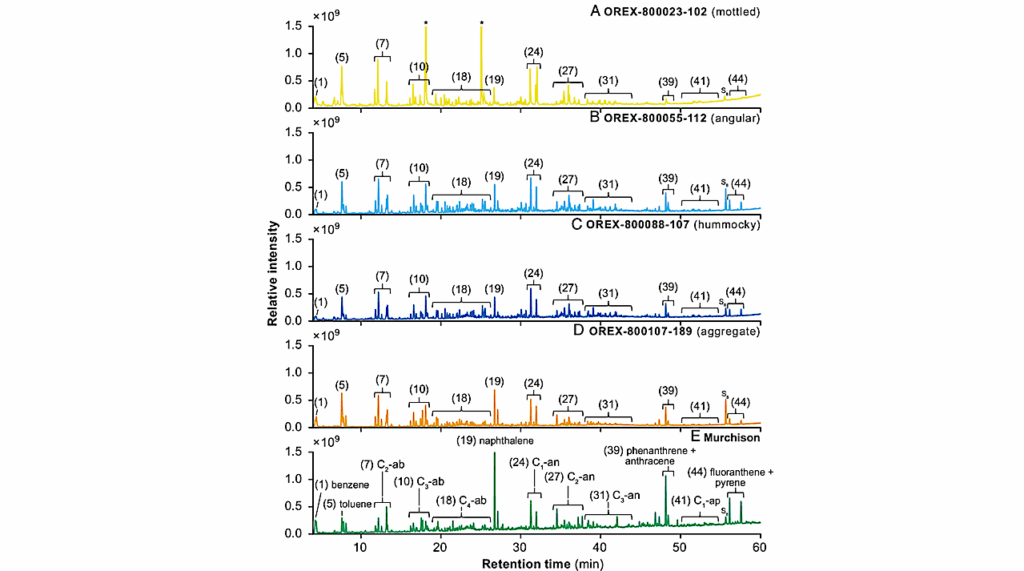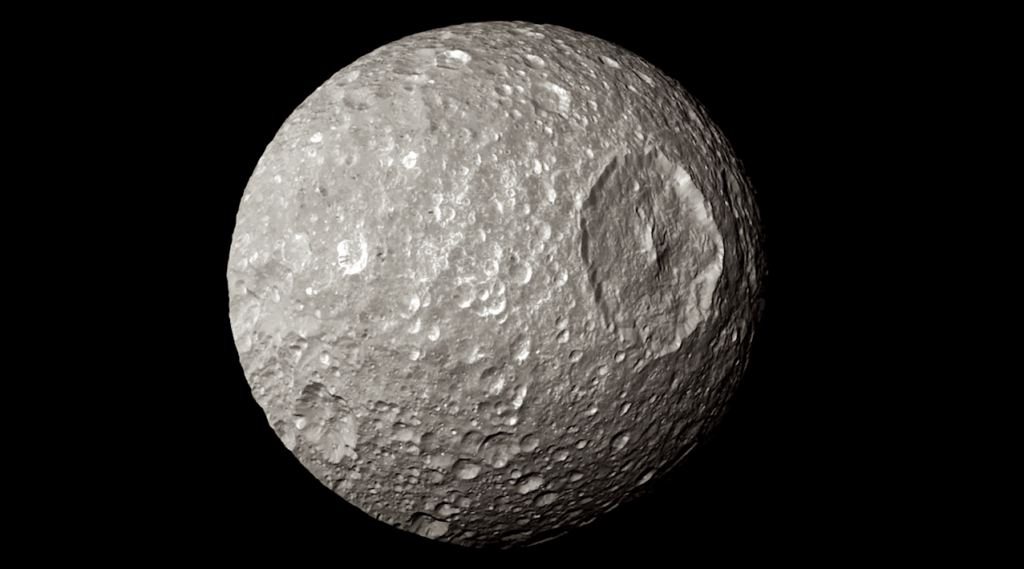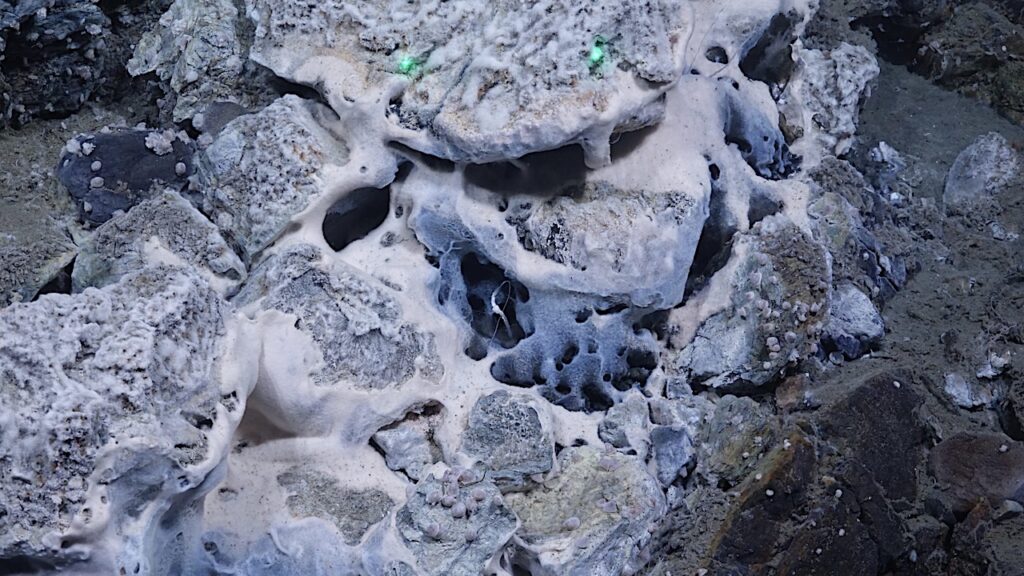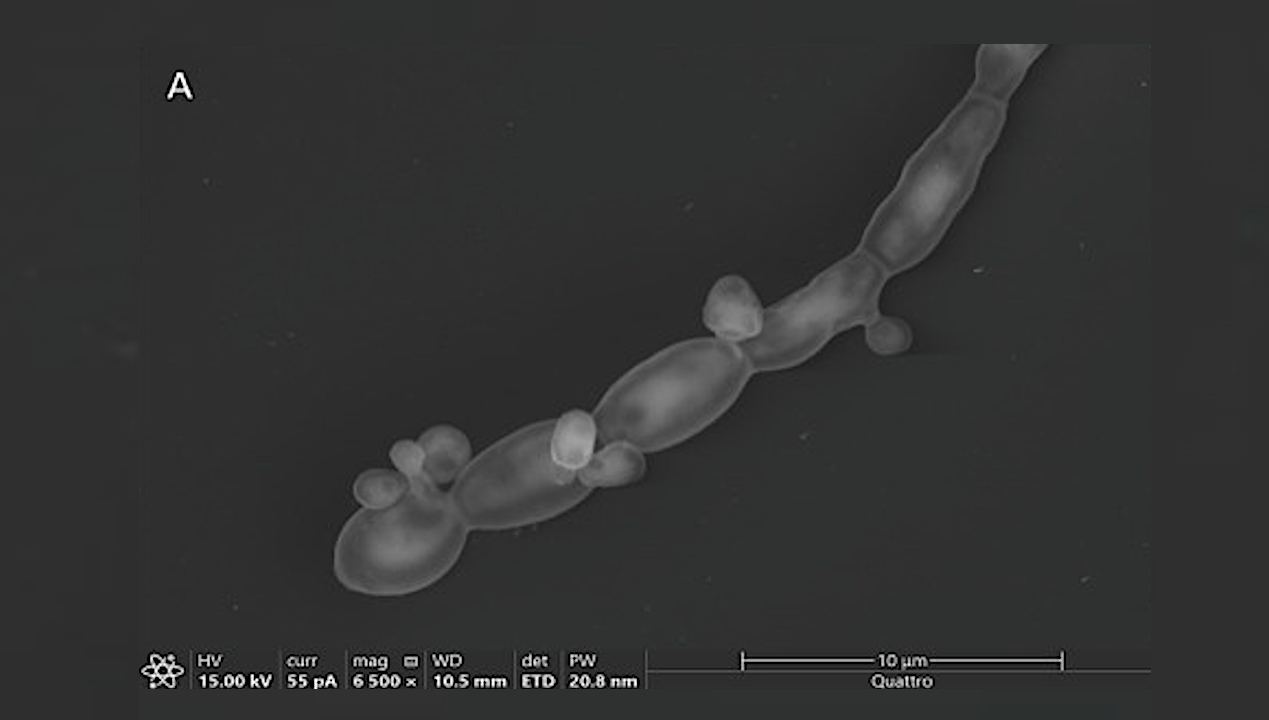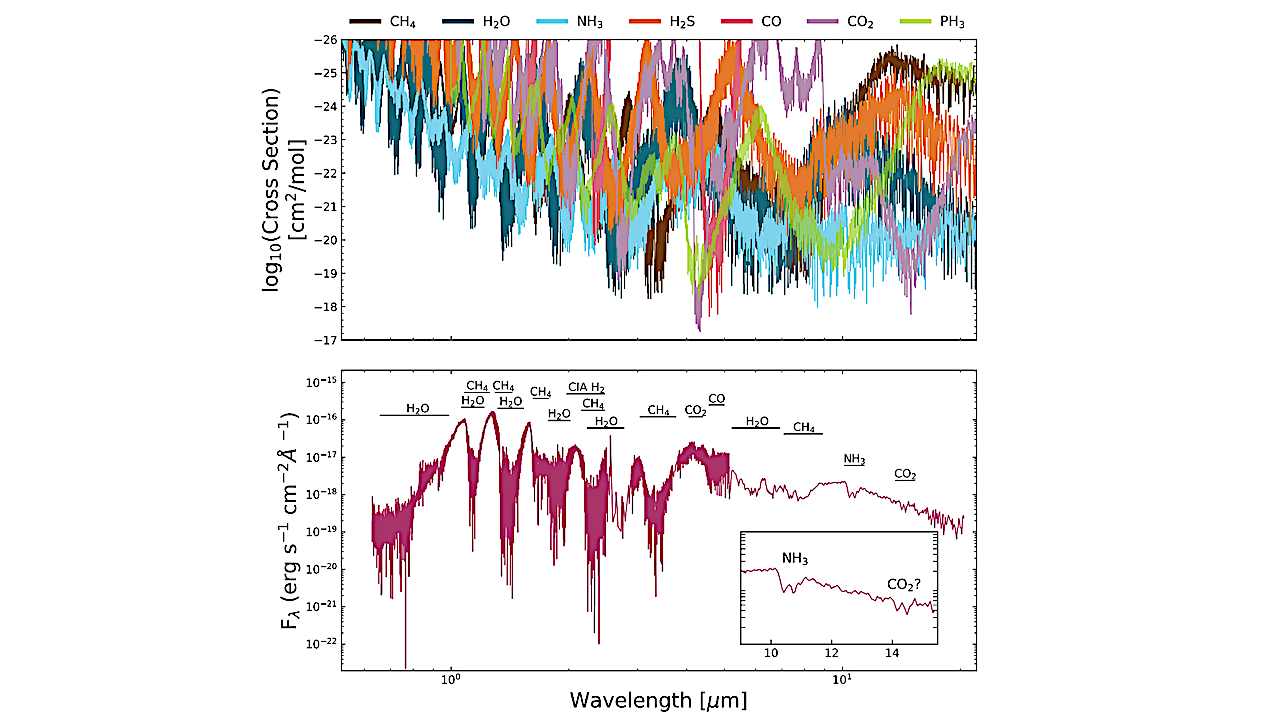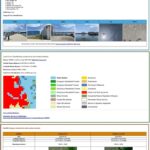Now Reading: JWST NIRISS Transmission Spectroscopy of the Super-Earth GJ 357b, a Favourable Target for Atmospheric Retention
-
01
JWST NIRISS Transmission Spectroscopy of the Super-Earth GJ 357b, a Favourable Target for Atmospheric Retention
JWST NIRISS Transmission Spectroscopy of the Super-Earth GJ 357b, a Favourable Target for Atmospheric Retention
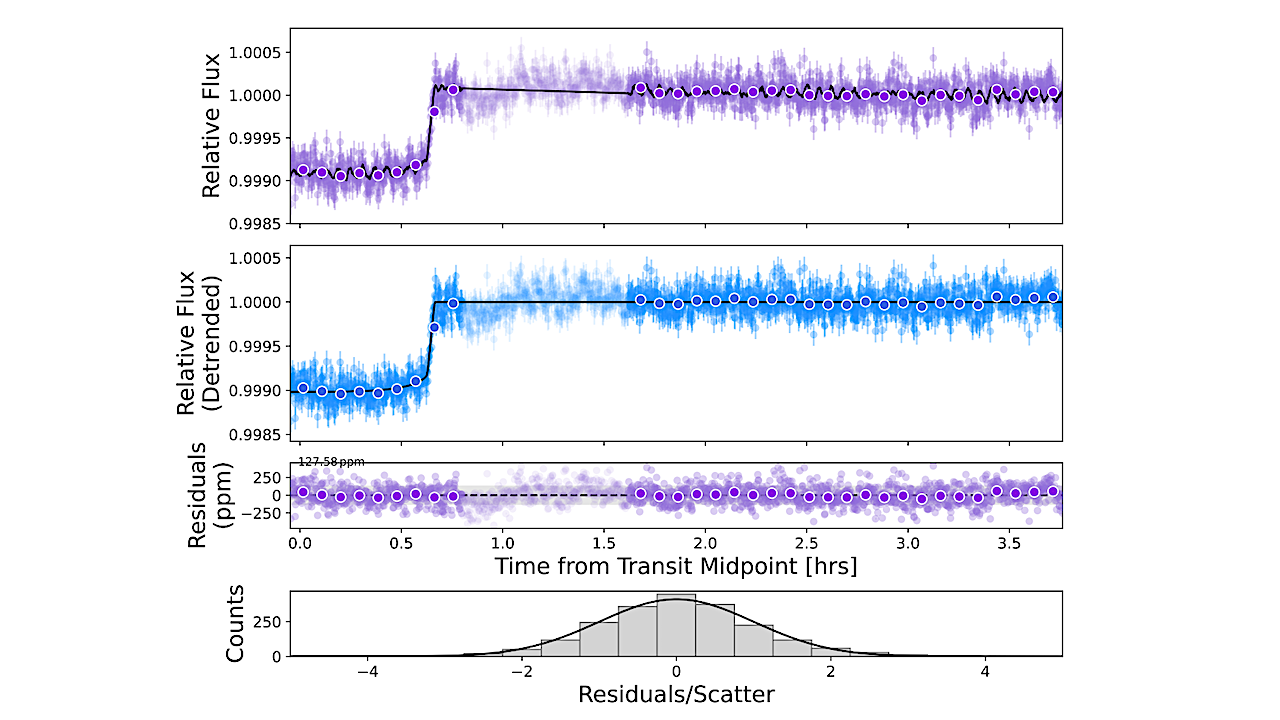

GJ 357 b NIRISS white light curve fit results. Top panel: Raw GJ 357 b order 1 white light curve, with the best-fitting astrophysical transit + systematics model overplotted in black. The first ∼40% of the transit was missed by our observation. Integrations from ∼0.8 – 1.5 hr post-transit mid-point (shown as faded) were excluded from the fit due to uncorrectable systematics. Second panel: Systematics corrected white light curve, with the best-fitting astrophysical model overplotted in black. Third panel: Residuals to the light curve fit. Some correlated noise remains in the post-transit baseline which is not adequately captured by our systematics model. Bottom panel: Histogram of residuals. — astro-ph.EP
We present a JWST NIRISS/SOSS transmission spectrum of the super-Earth GJ 357 b: the first atmospheric observation of this exoplanet.
Despite missing the first ∼40 % of the transit due to using an out-of-date ephemeris, we still recover a transmission spectrum that does not display any clear signs of atmospheric features. We perform a search for Gaussian-shaped absorption features within the data but find that this analysis yields comparable fits to the observations as a flat line.
We compare the transmission spectrum to a grid of atmosphere models and reject, to 3-σ confidence, atmospheres with metallicities ≲100× solar (∼4 g/mol) with clouds at pressures down to 0.01 bar. We analyse how the retention of a secondary atmosphere on GJ 357 b may be possible due to its higher escape velocity compared to an Earth-sized planet and the exceptional inactivity of its host star relative to other M2.5V stars.
The star’s XUV luminosity decays below the threshold for rapid atmospheric escape early enough that the volcanic revival of an atmosphere of several bars of CO2 is plausible, though subject to considerable uncertainty. Finally, we model the feasibility of detecting an atmosphere on GJ 357 b with MIRI/LRS, MIRI photometry, and NIRSpec/G395H.
We find that, with two eclipses, it would be possible to detect features indicative of an atmosphere or surface. Further to this, with 3-4 transits, it would be possible to detect a 1 bar nitrogen-rich atmosphere with 1000 ppm of CO2.
Jake Taylor, Michael Radica, Richard D. Chatterjee, Mark Hammond, Tobias Meier, Suzanne Aigrain, Ryan J. MacDonald, Loic Albert, Björn Benneke, Louis-Philippe Coulombe, Nicolas B. Cowan, Lisa Dang, René Doyon, Laura Flagg, Doug Johnstone, Lisa Kaltenegger, David Lafrenière, Stefan Pelletier, Caroline Piaulet-Ghorayeb, Jason F. Rowe, Pierre-Alexis Roy
Comments: Accepted for publication in MNRAS. 13 pages, 7 figures
Subjects: Earth and Planetary Astrophysics (astro-ph.EP); Solar and Stellar Astrophysics (astro-ph.SR)
Cite as: arXiv:2505.24462 [astro-ph.EP] (or arXiv:2505.24462v1 [astro-ph.EP] for this version)
https://doi.org/10.48550/arXiv.2505.24462
Focus to learn more
Submission history
From: Jake Taylor
[v1] Fri, 30 May 2025 11:05:38 UTC (1,678 KB)
https://arxiv.org/abs/2505.24462
Astrobiology,
Stay Informed With the Latest & Most Important News
-
 012024 in Review: Highlights from NASA in Silicon Valley
012024 in Review: Highlights from NASA in Silicon Valley -
 02Panasonic Leica Summilux DG 15mm f/1.7 ASPH review
02Panasonic Leica Summilux DG 15mm f/1.7 ASPH review -
 03How New NASA, India Earth Satellite NISAR Will See Earth
03How New NASA, India Earth Satellite NISAR Will See Earth -
 04And Thus Begins A New Year For Life On Earth
04And Thus Begins A New Year For Life On Earth -
 05Astronomy Activation Ambassadors: A New Era
05Astronomy Activation Ambassadors: A New Era -
06SpaceX launch surge helps set new global launch record in 2024
-
 07Space Force plans new ‘Futures Command’ amid pressure to speed up modernization
07Space Force plans new ‘Futures Command’ amid pressure to speed up modernization












